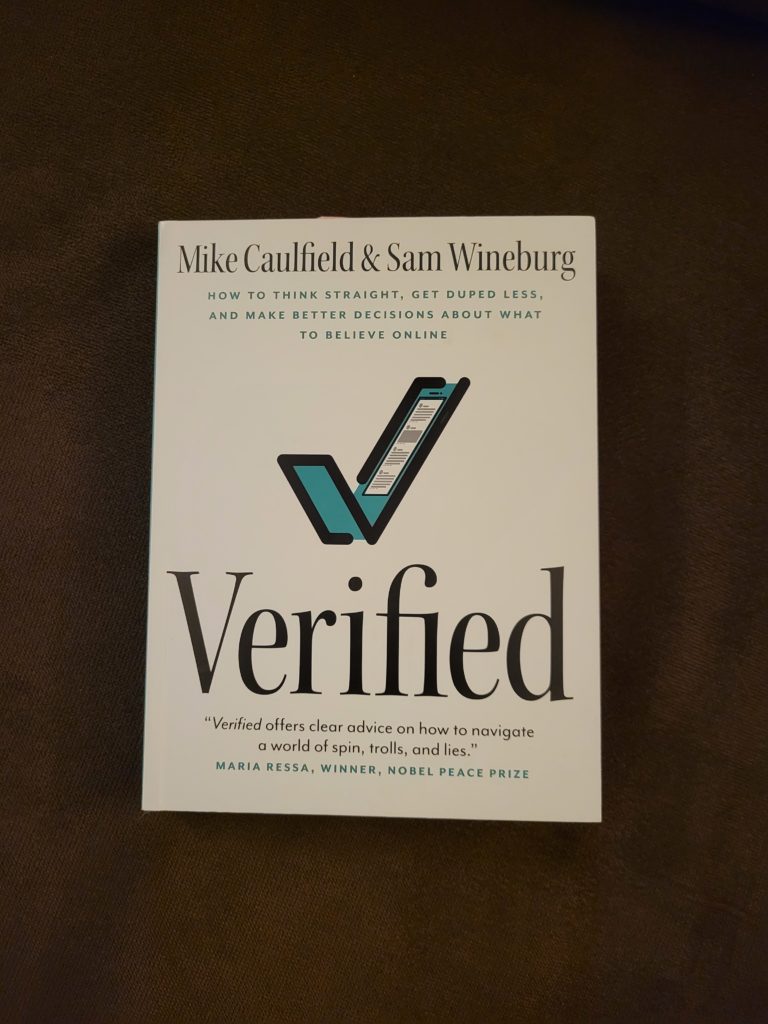
Today, I finished reading Verified: How to Think Straight, Get Duped Less, and Make Better Decisions about What to Believe Online by Mike Caulfield and Sam Wineburg for Nonfiction November’s “Web” prompt.
I consider myself a very savvy person when it comes to navigating information online. I’ve been teaching high school English for almost 24 years, and I have master’s degrees in Classroom Technology and Library and Information Science. I love teaching research skills, especially evaluating information for credibility and bias, mostly because I’ve seen so many people I care about get sucked into misinformation and easily debunked conspiracy theories. Because I know the information landscape is constantly changing, I do my best to keep up. When I saw that Mike Caulfield and Sam Wineburg were releasing a book, I knew I had to have it immediately, because I’ve used their work with my students and when preparing professional development for my colleagues.
I’m familiar with Caulfield’s SIFT method, and Verified provides many examples of how to use it in different contexts. As a longtime fan of the CRAAP test, I appreciated learning why checklists don’t hold up, and why the SIFT method is a faster and more reliable alternative. I may be most grateful for the chapter on Wikipedia because so many of my students and colleagues are not aware of how far it has come or what a valuable tool it can be. As I was reading, I kept marking pages with ideas that could be turned into activities for students (and possibly colleagues), and I see myself sitting with this book as I revise and update my research lessons. I learned a lot from the chapter on advertising because I found out that there’s so much I didn’t know about online advertising, especially native advertising. Caulfield and Wineburg also address AI in the postscript and explain how the SIFT method holds up in the face of AI generated disinformation.
This book is extremely accessible and would be valuable for anyone who wants to be smarter in how they approach the information they encounter online. For those of us who teach research, it’s a must read.